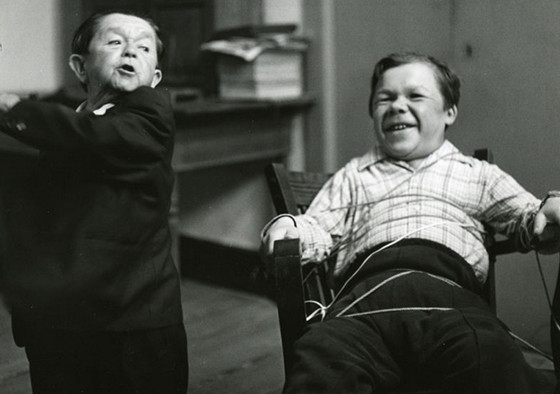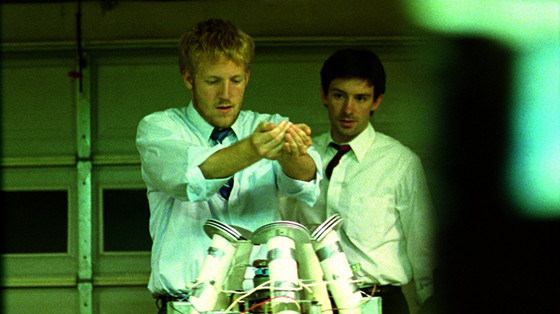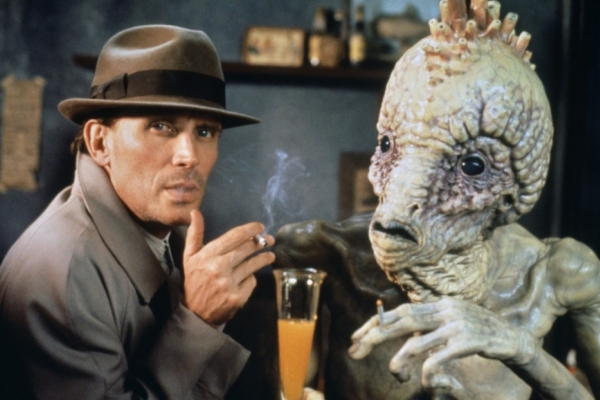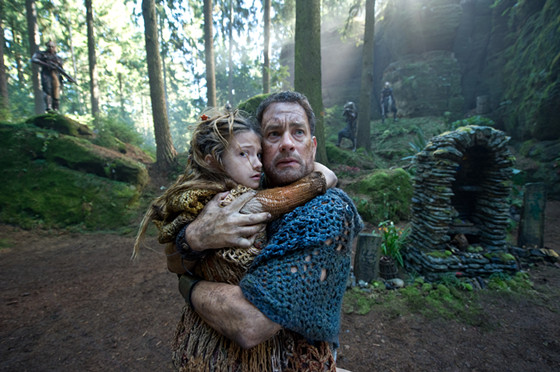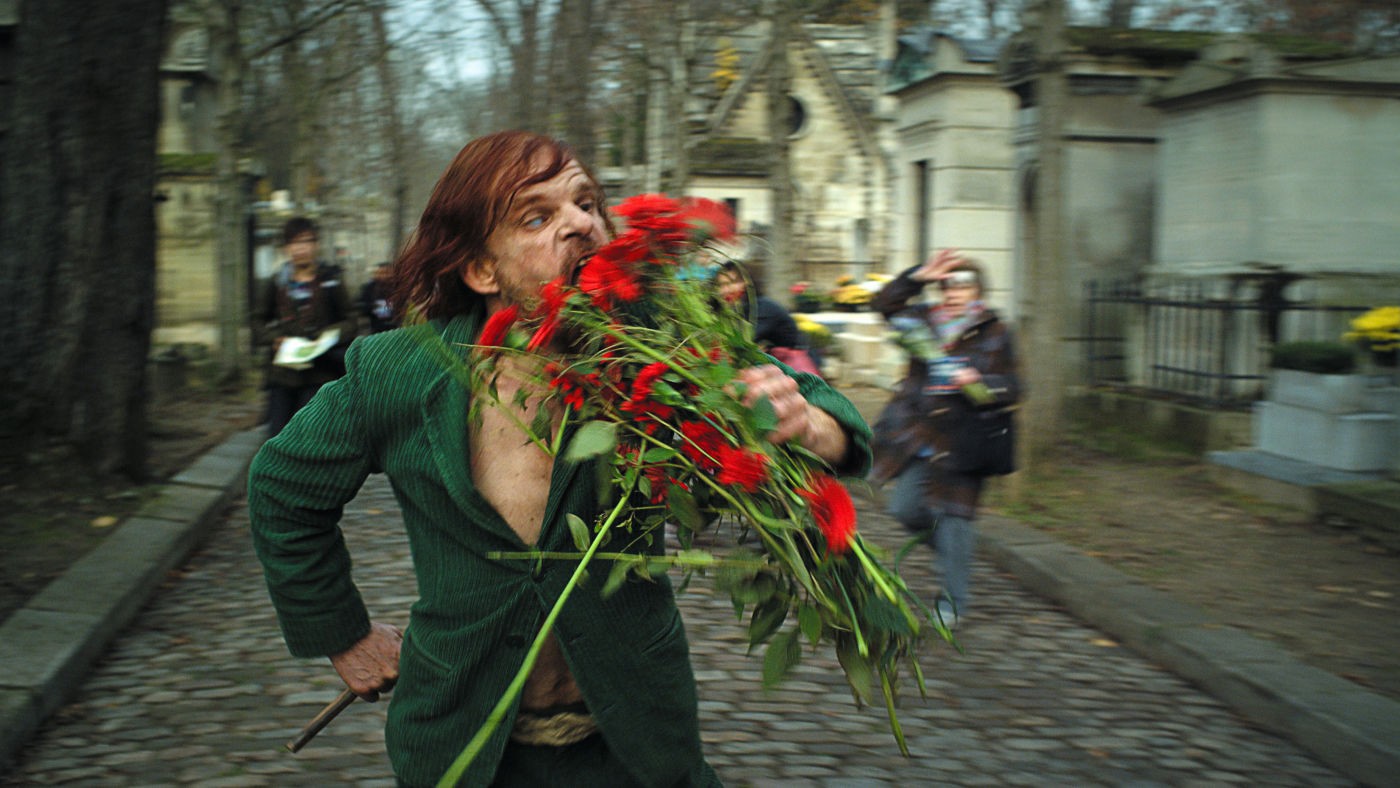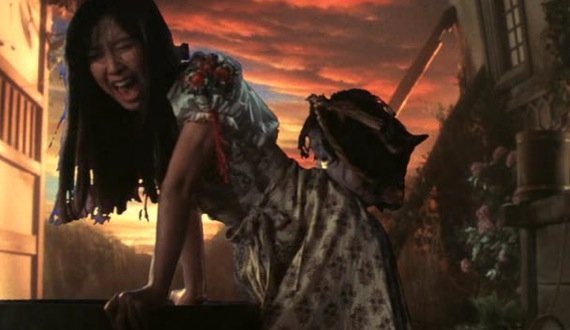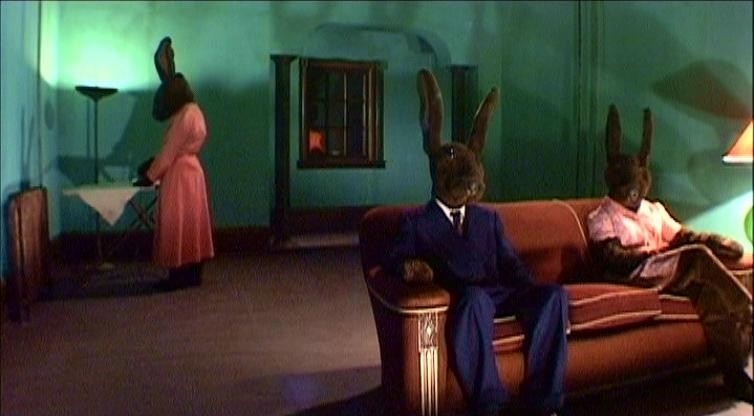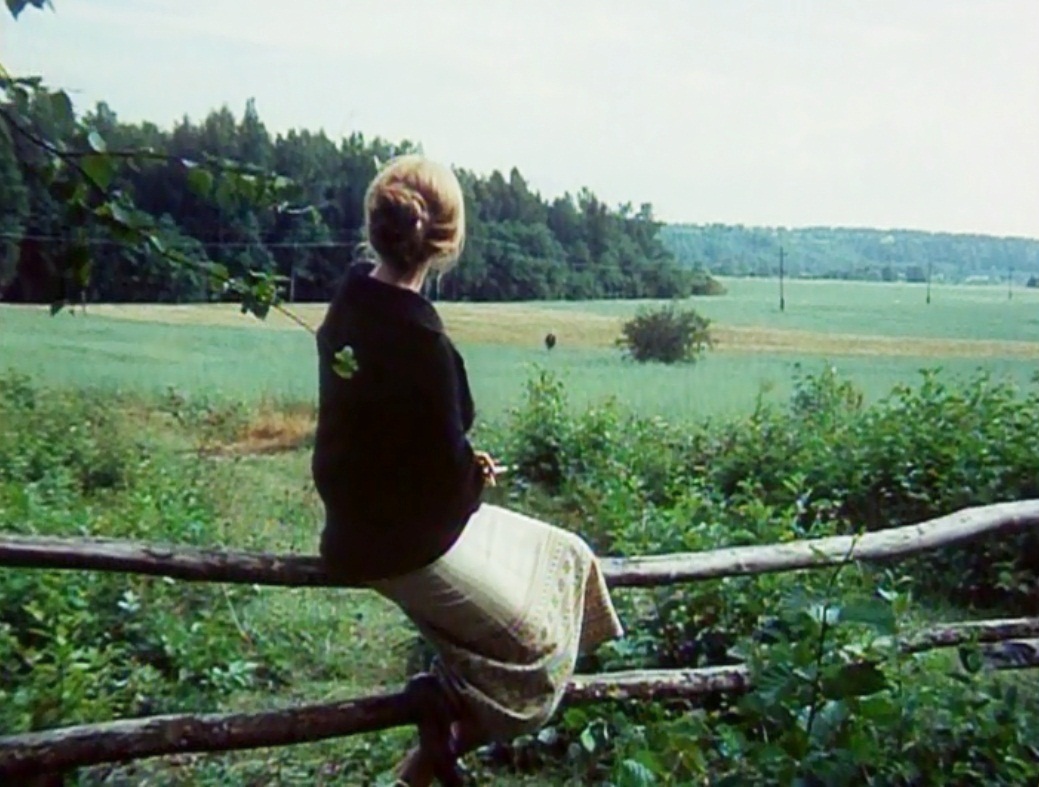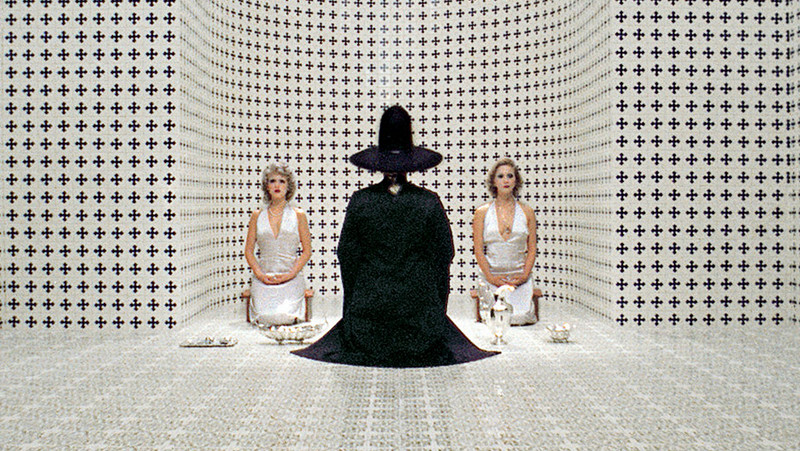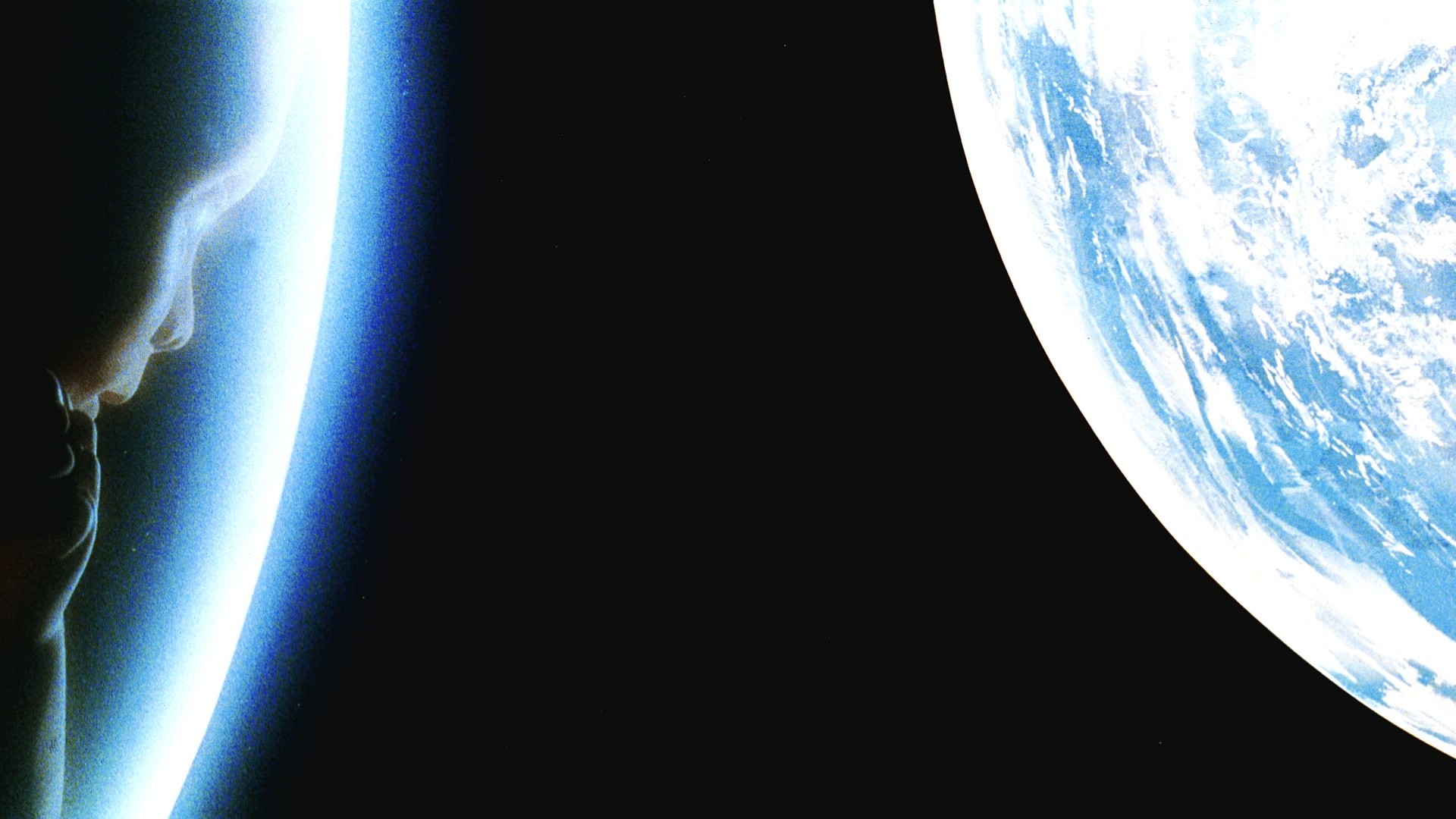10. Even Dwarves Started Small – Werner Herzog
Legendary writer/director Werner Herzog’s second feature length film follows the ensuing chaos after a secluded institution is overthrown by its residents. If the increasingly bizarre acts of anarchy did not add enough “weird” factor, Herzog cast the entire film with dwarves.
The band of little people start off their rebellion by breaking dishes, committing random acts of arson and generally just running amok with their newfound freedom. Soon the madness takes a disturbing turn. The dwarves start torturing the weaker links among themselves and even ritualistically crucify a monkey… all for no apparent reason.
Even Dwarves Started Small has no plot. This movie is one of the most confusing ever because one cannot get a logical grasp on why… why the chaos, why dwarves, and why does the leader never stop laughing demonically? The movie is not for everyone, especially those who’d require some kind of explanation for the random pandemonium exercised in its 90 minutes. Herzog provides no respite. Even Dwarves Started Small is nightmarish and impenetrable. It’s a masterpiece of the macabre.
9. Primer – Shane Carruth
Of all the movies out there featuring time travel, Primer just might be the most confusing. Writer/Director Shane Carruth’s debut was made on a shoestring budget with no name actors. It has since become a modern cult classic for its maddeningly intricate plot that demands subsequent viewing.
Look up “Primer Explained” on YouTube and watch as dedicated fans have drawn up diagrams on the different time threads and paradoxes that occur in the story. The great thing about this film is that the information to understand Primer is in fact present, buried beneath the exposition for those patient enough to excavate it.
8. Naked Lunch – David Cronenberg
Based on the novel by William S. Burroughs, Naked Lunch is about exterminator William Lee who suffers wild hallucinations after having too much exposure to “bug powder.” Lee is convinced he is a secret agent whose contacts are an alien called a Mugwump and an insect-like typewriter. After killing his wife under the direction of the typewriter, Lee embarks to a place called “Interzone” where he writes a book called Naked Lunch.
Adapting William S. Burroughs seminal novel to the screen was undoubtedly a daunting task. Director David Cronenberg takes narrative from Burroughs work, along with other of his writings to create the universe of the movie which more or less keeps with the surreal, dark tone of the novel.
Peter Weller does an excellent job embodying William Lee in a dry, disparaging manner that is at once uncomfortable to watch but undeniably compelling. Early on, the narrative unravels from any traditional form and forces the audience to experience the outlandish world on its own terms. Naked Lunch is a must watch if you’re a fan of Burroughs novel or just a glutton for weird cinema.
7. Cloud Atlas – Larry and Lana Wachowski, Tom Twyker
Tom Hanks, Halle Barry, and Jim Broadbent star in this sprawling sci-fi epic that spans centuries. Each time period features the actors in various modes of costume and dialect, as they each play numerous roles throughout.
Larry and Lana Wachowski of Matrix fame, along with veteran German filmmaker Tom Twyker have concocted in Cloud Atlas one of the most ambitious and puzzling science fiction films in history. While one could become hopelessly lost in Atlas’ disjointed narrative and dozens of reoccurring characters, there’s a strong theme in this movie that permeates throughout.
Its thesis revolves around the idea that actions of each individual echo throughout the past, present, and future. One act of decency or cruelty in this life could spawn a revolution ten generations from now. There’s a lot to chew in the three hour-long opus that is Cloud Atlas.
6. Holy Motors – Leos Carax
The film follows a strange man riding in the back of a limousine to “appointments” where he dresses up in costumes and performs puzzlingly random deeds. His costumes include a homeless beggar woman, a motion capture suit, and a violent leprechaun among others.
The enigma that is Holy Motors captivated audiences for its audacious surrealism and cryptic plot. The narrative is not bound by a traditional story arc in any way, but it still hints toward a profundity just out of reach.
Even if you’re completely lost in the peculiar characters and world Holy Motors creates, it’s still a marvel to behold for the unabashed creativity and gorgeous camerawork on display. There may not be a proper way to analyze this cult classic with traditional logic, but that’s what makes it one of the most confusing films of all time.
5. Hausu – Nobuhiko Obayashi
A teenage girl travels with her friends to visit her aunt in a big, creepy mansion. Almost instantaneously the story devolves into a weirdly funny/disturbing mix of phantasmagoric surrealism masquerading as a haunted house movie. Or is it the other way around? In Hausu, images and mood, not plot or character are the most important aspects of telling its story.
Director Nobuhiko Obayashi once said Hausu is really a meditation about the generational difference in Japan since the atomic bombs dropped. Notice in the beginning of the film, there’s a 2 second image of a nuclear blast and one of the girls describes it as “cotton candy.”
Also note the reoccurring motif of flashes of light (character’s eyes, cat’s eyes) specifically after the click of a camera, suggestive of the same instant the bomb flashed and destroyed hundreds of thousands of people. With these little details in mind, one can somewhat unearth a theme from the absurd, overwhelming, controlled chaos that is Hausu.
4. Inland Empire – David Lynch
In 2006 David Lynch made Inland Empire, his first film since the famously enigmatic Mulholland Dr. Upon its release, Inland Empire garnered some critical praise for Laura Dern’s incredibly intense performance as well as its inventive, increasingly nightmarish tone. Others argued the movie is so convoluted and bizarre it literally defies logic, or for that matter any traditional means of narrative structure. Just how confusing is it?
Inland Empire makes all other Lynch movies look formulaic. it’s really, really weird. That said, David Lynch is a master of atmosphere; and Inland Empire’s labyrinthine plot, disturbing images, and creepy sound design have a way of burrowing under the skin and staying there. It may be hard to follow, but it’s a waking nightmare of a movie that’s worth the price of admission.
3. The Mirror – Andrei Tarkovsky
The Mirror is a non-linear film from Russian director Andrei Tarkovski. The movie is an autobiographical account of Tarkovsky’s childhood, and is widely regarded as one of Tarkovski’s most difficult movies but also one of his best and most beautiful.
The story unfolds as memories from the mind of a dying poet. These images are sometimes loosely connected, sometimes not at all, but always in a kind of stream of coconsciousness rhythm. The cinematography is stunning, periodically shifting between color, sepia and black and white tones.
The Mirror; like all of Tarkovsky’s works has excruciatingly long takes, slow pacing, and loaded symbolic imagery throughout. Those familiar with his other films will find much to admire in this movie. For those not familiar, it’s a gorgeous visual poem that’ll either blow your mind or bore you to tears.
2. Holy Mountain – Alejandro Jodorowsky
A beggar/thief who resembles Jesus Christ climbs a tower to meet an alchemist, who takes in the thief as his apprentice. Eventually a handful of other despicable characters join their group to ascend the Holy Mountain, where immortal masters reside.
During the course of their journey led by the alchemist, the characters are subjected to different rituals designed to help them transform themselves. When they reach the top of the mountain, the thief is instructed to go home and the alchemist breaks the fourth wall to tell the audience to go home.
Alejandro Jadorowsky’s films and notoriously hard to understand. They’re overflowing with ideas, with mysticism, with revelations about mankind. There are few directors in the history of cinema that are as fearless and as willing to confound their audiences as Jadorowsky. Holy Mountain is the epitome of cult classic. While it might not make much sense to anyone unfamiliar with the tenets of tarot cards and mysticism (which is most everyone), this movie is still a timeless masterpiece and the work of a true artist.
1. 2001: A Space Odyssey – Stanley Kubrick
Stanley Kubrick’s seminal 1968 space opera changed science fiction films forever. From the audacious opening scenes of prehistoric man’s first encounter with otherworldly intelligence, to the iconic final image of man reborn into some kind of ultra-evolved space baby, 2001 will forever stand as one of the most interesting but confounding cinematic experiences.
While there are threads in Kubrick and co-writer Arthur C. Clarke’s story that tie somewhat into a cohesive narrative, there’s little debate that the final 30 psychedelic minutes are not meant to follow a traditional story arc. What really happened and why is anyone’s guess. If you haven’t already seen this masterpiece and you like thought-provoking science fiction, 2001: A Space Odyssey is required viewing.
Author Bio: Kent Reason is a screenwriting major at Chapman University. His favorite things are coffee, camping and cats.
